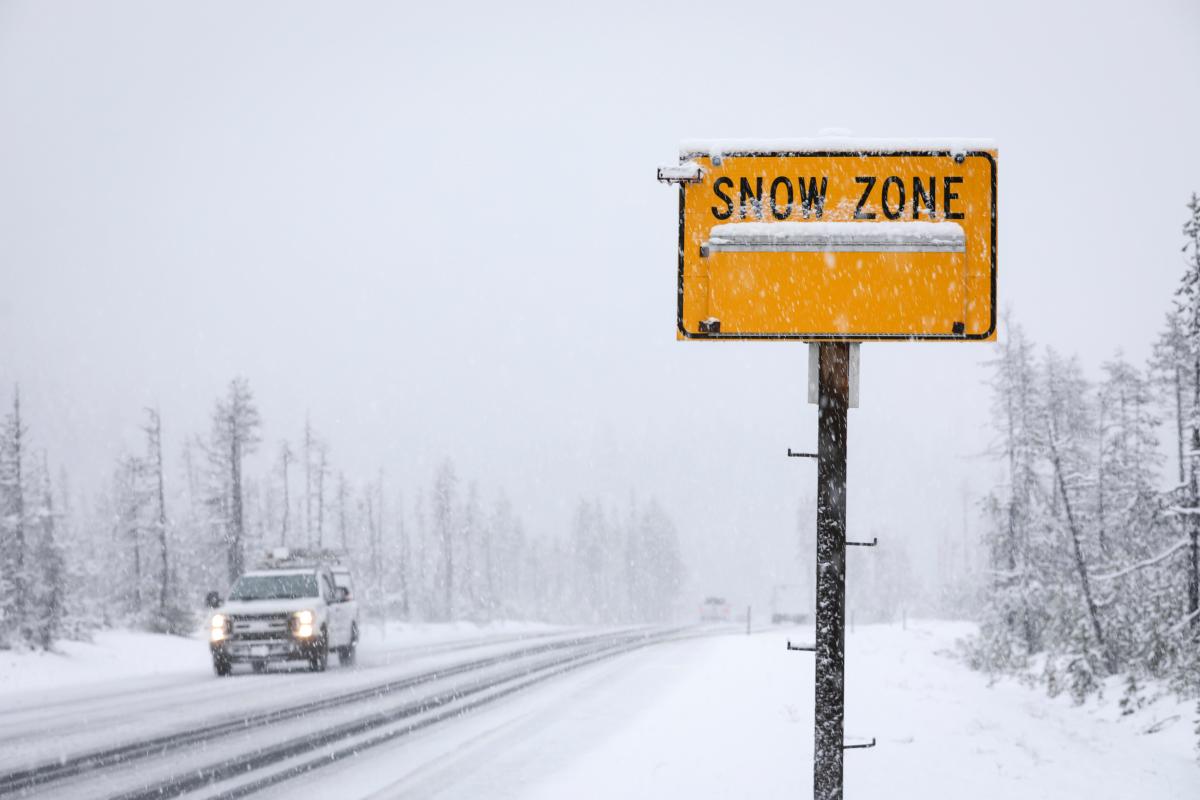Oregon Braces for a Snowy Onslaught: Up to 20 Inches Predicted in Cascade Passes
As winter settles in across the Pacific Northwest, Oregon is preparing for an impending winter storm that is expected to deliver up to 20 inches of snow in the Cascade Mountain passes. This weather system poses significant challenges for residents, travelers, and local authorities alike, as they navigate the potential disruptions that accompany such heavy snowfall.
Weather Forecast and Implications
The National Weather Service (NWS) has issued warnings for various regions in Oregon, particularly focusing on the Cascade Range where snowfall accumulations could reach alarming levels. These predictions indicate a powerful winter storm that could impact travel, infrastructure, and daily life in both urban and rural communities.
Forecasts suggest that the storm will begin late Friday evening, with snowfall intensifying overnight into Saturday. While the Cascade passes are expected to bear the brunt of this precipitation, lower elevations may also experience significant snow, particularly in the Willamette Valley and surrounding areas.
Expected Snowfall Totals
- Cascade Passes: Up to 20 inches
- Lower Elevations: 6 to 12 inches
- Higher Elevations: 1 to 3 feet in some areas
Travelers are advised to stay updated with the latest forecasts and road conditions, as the combination of heavy snow and gusty winds could lead to whiteout conditions, making travel extremely hazardous.
Travel and Safety Precautions
In anticipation of the storm, Oregon Department of Transportation (ODOT) officials are ramping up preparations to ensure roads remain as safe as possible. Here are some of the measures being undertaken:
- Snowplow Activation: Increased deployment of snowplows and road maintenance crews to clear highways and byways.
- Travel Alerts: Issuance of travel advisories for potentially affected areas, urging caution and preparedness.
- Emergency Response Coordination: Collaboration between local law enforcement, emergency services, and public works to respond effectively to any incidents caused by the storm.
Residents are encouraged to prepare their homes and vehicles for the winter weather. Essential items to stock up on include:
- Non-perishable food
- Water and other beverages
- Warm clothing and blankets
- Flashlights and batteries
- First aid supplies
The Broader Impact of Heavy Snowfall
While heavy snowfall can bring picturesque winter scenes, it can also have far-reaching consequences for Oregon’s economy and infrastructure. The tourism sector, particularly in ski resorts and winter sports areas, often benefits from significant snowfall, attracting visitors eager to hit the slopes. However, the same snow can also lead to road closures, affecting access to these destinations.
Economic Considerations
Businesses in the hospitality and retail sectors may see a spike in activity as snow enthusiasts flock to local resorts. Conversely, if the storm results in prolonged travel disruptions, local economies could face challenges, particularly in rural areas dependent on tourism.
Moreover, heavy snowfall can strain local resources and infrastructure. Municipalities must allocate funds for snow removal and emergency services, which can divert budgets from other essential services. This situation necessitates careful planning and resource management to mitigate the financial impact on local governments.
Environmental Perspectives
The impact of winter storms extends beyond immediate human activity. Snowpack accumulation plays a vital role in the region’s water supply, replenishing reservoirs and aquifers as it melts in the spring. However, excessive snowfall can lead to flooding and runoff issues, particularly if temperatures rise rapidly following the storm.
Additionally, the ecological consequences of heavy snowfall can affect wildlife and natural habitats. Species that rely on certain environmental conditions may find their habitats altered, impacting feeding patterns and migration routes. It’s crucial for environmental agencies to monitor these changes closely to understand and mitigate adverse effects on local ecosystems.
Community Preparedness and Resilience
As Oregon braces for this winter storm, community preparedness becomes increasingly important. Local authorities are working to ensure that residents are well-informed about potential risks and safety measures. Community outreach programs are vital in fostering resilience, helping residents understand how to respond to severe weather.
Moreover, as climate change continues to influence weather patterns, the state must adapt its infrastructure and emergency response strategies. Learning from past winter storms can help communities better prepare for future events and minimize the impact on residents and businesses alike.
Conclusion
Oregon’s upcoming winter storm is a reminder of the power of nature and the necessity for preparedness. With forecasts predicting significant snowfall in the Cascade passes and surrounding areas, residents and travelers must stay informed and take the necessary precautions. Local authorities are mobilizing resources to ensure safety on the roads and in communities, while businesses and individuals alike must brace for potential disruptions.
As the state navigates the challenges posed by winter weather, it is essential to recognize both the immediate and long-term implications of heavy snowfall on travel, the economy, and the environment. Through community cooperation and resilience, Oregonians can work together to weather the storm and emerge stronger on the other side.
See more Your Daily Weather



